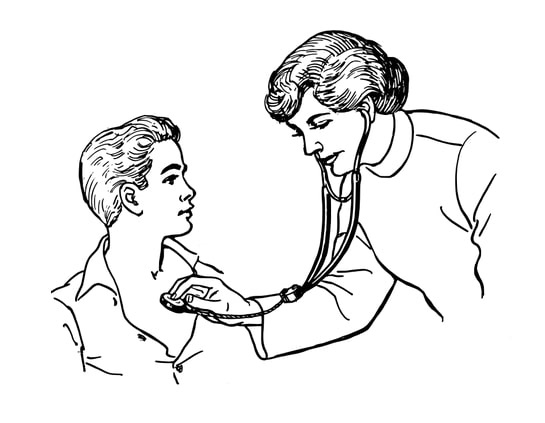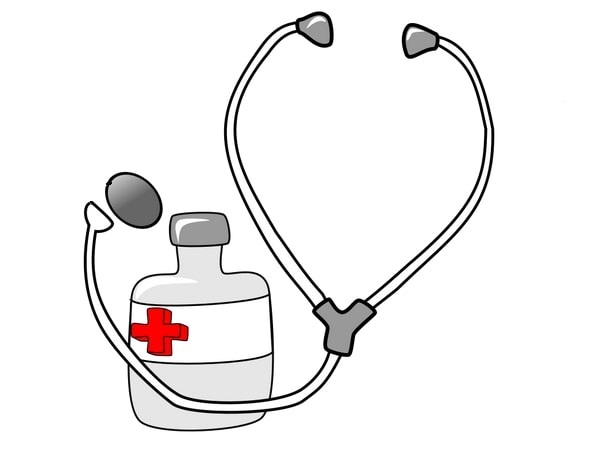Introduction: In this article, Jessica Edwards concludes her two-part story giving tips for including medical history in your family history research. Jessica has had a lifelong interest in her family’s history – especially on her father’s side, which goes back to the first settlers in Pennsylvania, Jamestown and New England – and has documented and added more than 21,000 people to her family tree!
Note: Part I of this article, posted yesterday, ended with Step Three: “Step three is to organize all of this information into a format that doctors and medical practitioners are familiar with.” Today’s concluding Part II provides specifics of what information to record in the medical history you are preparing.

These are the elements to include in your final personal medical history:
1) Name, gender, birth date, marital status, religion (this is because some religious practices may affect some treatments, and it also informs the doctor and/or hospital about whom to call for comfort for you and/or your family if necessary)
2) Spouse name, emergency contact person, health proxy, children’s names and birthdates
3) Home address, home phone, work phone, email address, fax
4) Insurance company and policy number
5) Names and phone numbers of practitioners seen recently: primary care doctor, specialists, chiropractor, pharmacist
6) Present medical conditions: diabetes, high blood pressure, hay fever, and other conditions that are current or chronic in nature; diseases and illnesses that affect your body often or always
7) Current medications: correct names, doses, when taken, when began, who prescribed, side effects, over-the-counter products, vitamins, herbs, etc.
8) Allergies: to medicines, foods, chemicals, natural and human-made substances, insects, and anything that causes an unusual reaction to your body; note how you respond to it
9) Past medical history: childhood illnesses, immunization history, pregnancies, short term illnesses, longer term conditions, and other diseases that affected you in the past and are not mentioned in line 6 (Present medical conditions)
10) Hospitalizations: include in-patient stays, ER visits
11) Surgeries: minor and major, with anesthesia, out-patient, deliveries, invasive procedures, etc.
12) Significant and recent blood tests: most doctors will give you a copy of any bloodwork that is done on you; record only the significant values in this document and file lab records; some of the important numbers include glucose (sugar), fasting cholesterol, white blood cell count, cancer values, kidney function, and several others that your doctor should tell you about (have your practitioner help you with this section to be more accurate)
13) Special tests and procedures: X-rays and other radiology tests, EKG, stress test, echocardiogram, colonoscopy, and other similar procedures done at a health facility
14) Family history: the significant diseases in your family line, especially your grandparents, parents, siblings, and children
15) Injuries, accidents, disabilities: what happened and what was done for it; how it has affected you – and does affect you now
16) Review of systems: this is a catch-all section for any other problem you may be having or have had in the fairly recent past. Under each of the following body systems, note any problems, symptoms and signs you experience, recent sicknesses, and other aspects that may be related to that particular part of the body:
- Neurological: brain, nerves, headache, etc.
- Eyes: vision test results, prescription for glasses
- Ears: hearing, infections
- Nose, Sinus
- Throat
- Neck
- Lungs (Respiratory)
- Heart (Cardiac and Vascular)
- Gastrointestinal: particularly esophagus, stomach, intestines, rectum, liver, gallbladder, pancreas
- Urinary: kidneys, bladder, etc.
- Sexual Organs: STDs, recent activity and problems, drive
- Musculoskeletal: spine, bones, joints, muscles
- Endocrine: glands, hormones, thyroid, diabetic symptoms, and related functions
- Blood and Lymph Systems: anemia, iron deficiency
- Psychological: depression, anxiety, adverse attitudes, mood swings, and mental problems
- General: fatigue, weakness, memory loss, confusion, weight changes, appetite, pain
17) Social history and lifestyle: habits, diet, exercise, sports, hobbies, household situation, frequent activities, significant relationships
18) Work history: current jobs, recent jobs and past occupations; particularly if you endured special work hazards, risks, stress, and other factors that have affected your health
19) Chronological list of practitioner office visits in the past year or two
Recording a medical history in this manner will greatly help you in understanding and gaining control of your health. It will also help your present and future practitioners treat you much more effectively. One major benefit to this that I have found is my not needing to remember all of my medical history, and I don’t have to rewrite it when I see a new doctor (I keep a copy in my wallet and just have the new doctor’s office make a copy). Another benefit is that by keeping it with me at all times in my wallet is that if I am unable to speak for myself a doctor will know my medical history to help with any treatment and to prevent potential problems.
One major side benefit of doing this is when you go to a new doctor or hospital you can hand over a copy of the prepared document and you won’t have to (A) waste time, (B) get a sore hand from trying to write down everything, and (C) it may speak for you when you cannot. I have given a copy to the person I have designated my Power of Attorney (POA) if I become unable to speak for myself, and then update it every six months or a year. I keep the original on my computer and I print a copy to keep in my wallet. I also forward an updated copy to my POA (which is why I date it – so that they know which copy is most recent).
As I recommended in yesterday’s article: After compiling your own medical history, focus on immediate family members, then extended family members. Keep medical information in mind as you research your ancestors, and document any relevant information you run across. By expanding your research to include medical history, you make a more complete genealogy of your family line.
Happy Hunting!
Related Article:
